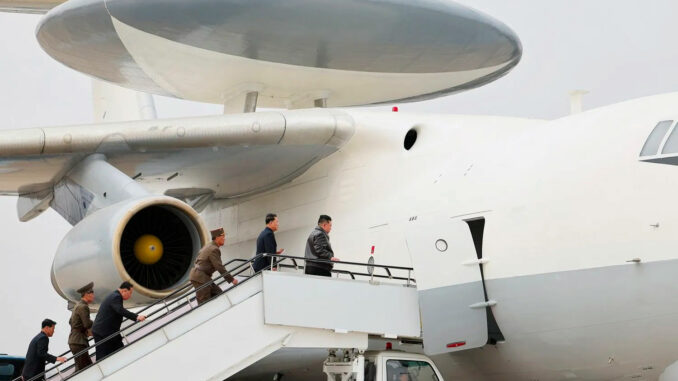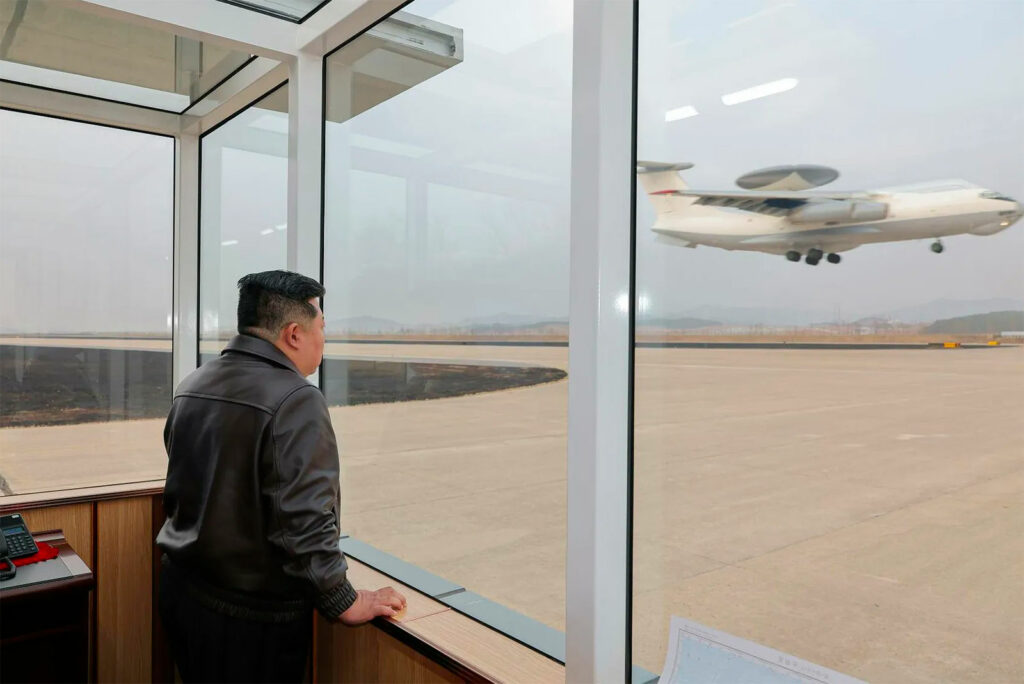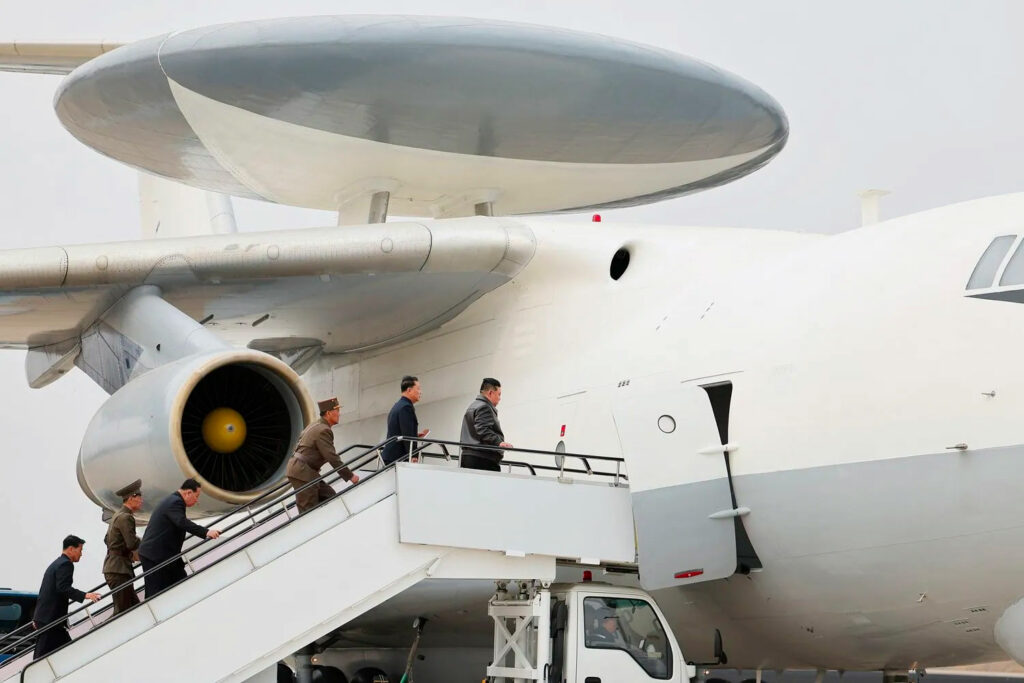
North Korea recently presented its first Il-76-based airborne surveillance and command (AEW&C) aircraft, marking a significant step in the strengthening of its military capabilities.
North Korea has developed an AEW&C airborne surveillance aircraft by modifying an Ilyushin Il-76. This new aircraft aims to improve the surveillance and control of North Korean airspace, although uncertainties remain as to its actual capabilities.

Presentation of the North Korean AEW&C aircraft
North Korea recently unveiled its first airborne early warning and control (AEW&C) aircraft, based on the Russian Ilyushin Il-76 transport aircraft. This aircraft, first observed in 2023, was presented during an inspection by leader Kim Jong-un at Pyongyang International Airport. The aircraft has a two-tone white and gray livery and is equipped with a fixed triangular radome mounted on the rear fuselage, similar to the Chinese KJ-2000. The interior, unveiled by state media, shows several workstations and flat screens, suggesting a modern configuration for surveillance and command operations.
Technical capabilities and comparison with other AEW&C systems
AEW&C aircraft play a crucial role in airspace surveillance, early threat detection and the coordination of military operations. The North Korean model, based on the Il-76, is reminiscent of the Chinese KJ-2000, which also uses the Il-76 platform. The KJ-2000 is equipped with a phased array radar offering 360-degree coverage and can detect airborne targets up to 470 km away. However, the KJ-2000 has only been in service since 2006, and more advanced models such as the KJ-3000 have since been developed. The exact capabilities of the North Korean aircraft remain unknown, particularly in terms of detection range, data processing and integration with the country’s other air defense systems.

Strategic consequences and regional implications
The introduction of this AEW&C aircraft by North Korea could alter the balance of power in the region. By improving its ability to monitor its airspace and detect potential threats, Pyongyang could strengthen its defensive and offensive posture. However, with only one such aircraft, its operational impact remains limited. Moreover, this aircraft would become a priority target in the event of conflict, which could reduce its long-term effectiveness. North Korea’s neighbors, notably South Korea and Japan, already have advanced AEW&C systems, such as the Boeing E-7 Wedgetail and Boeing E-767, respectively, which maintains their technological advantage in this field.
Outlook and challenges for North Korea
The development of this AEW&C aircraft is evidence of North Korea’s efforts to modernize its armed forces despite international sanctions and technological limitations. However, several challenges remain, including aircraft maintenance, crew training and effective integration into existing military operations. In addition, dependence on foreign technologies, such as the Il-76 platform, raises questions about the sustainability of such programs. Nevertheless, this initiative could serve as a basis for future developments in the field of air surveillance and control for North Korea.
War Wings Daily is an independant magazine.